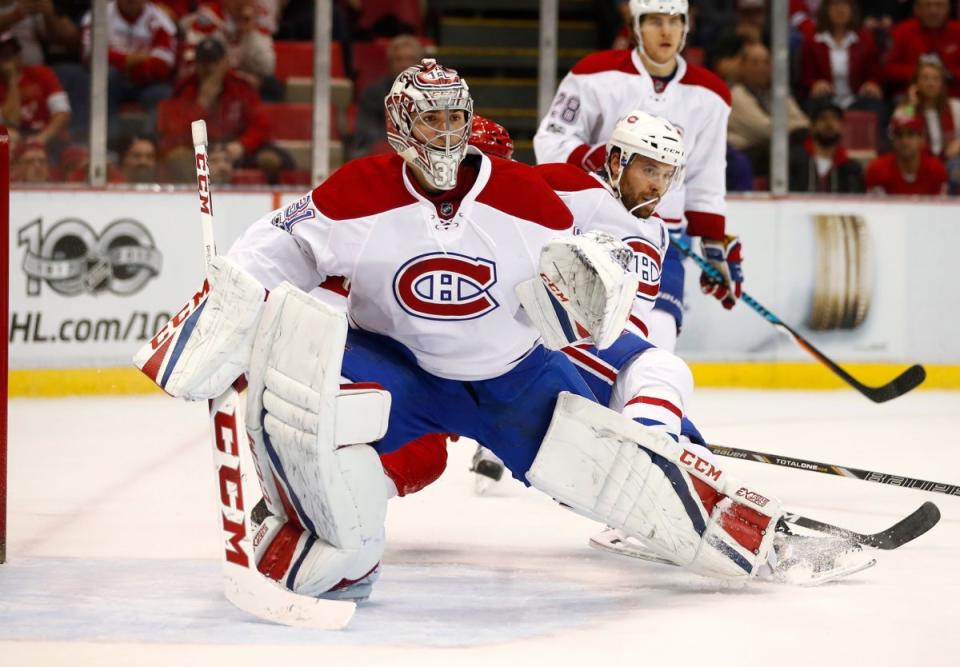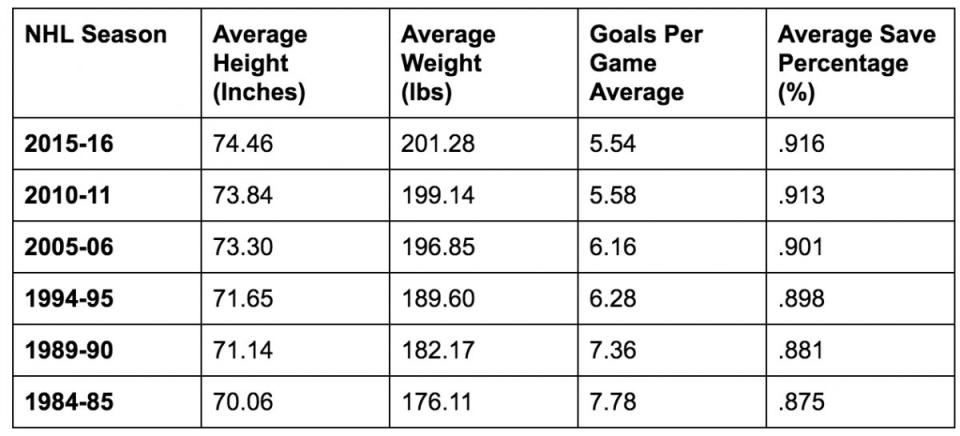5 times the NHL messed with goalies to boost scoring

Last month, the NHL sent out a memo stating that all netminders must be wearing the league’s new tighter, streamlined pants by Feb. 4. Though it wasn’t the league’s intention, four months into the season is an awkward time to force routine-obsessed goaltenders to change a major piece of their equipment.
New regulations on pants and chest pads were supposed to be enforced to begin the season, but due to several issues the complete overhaul isn’t expected to be implemented until the 2017-18 campaign.
Meanwhile, as the league continues to battle the size of goaltender equipment, goalies themselves continue to grow. Last season, NHL goaltenders were listed over four inches taller and 25 pounds heavier than they were in 1984-85. Perhaps to no one’s surprise, save percentages rose dramatically and scoring dropped by more than two goals per game over that same timespan.

In honor of the NHL’s latest attempt to boost scoring, here’s a brief look at the league’s history of goalie-affecting rule changes:
Elimination of the Crease Rule (1999-2000)
In 1999-2000, the crease rule was revised so that an attacking player’s position does not determine whether a goal should count or not. The goal would only be disallowed if clear contact or interference with the goaltender was determined. The updated rule canceled out one that was implemented in 1991, where a goal was disallowed if the puck entered the net while an offensive player was touching the goal crease. The rule was triggered by Brett Hull’s infamous and controversial Stanley Cup winning goal in 1999.
Introduction of the Goal Line Trapezoid (2005-06)

The league introduced the trapezoid as one of its major rule changes coming out of the 2004-05 lockout, in an attempt to prevent skilled goaltenders like Martin Brodeur from playing the puck so freely. A goaltender is penalized for touching the puck outside of the designated area, which allows teams much more effective forecheck if the goalie’s ability to play the puck is hindered. On the flip side, it also prevents skilled puck-playing goaltenders from creating offense for their team.
Smaller Gloves and Jerseys (2005-06)
In 2005, the NHL began requiring form-fitting jerseys and pads proportioned to a goalie’s height (for instance, 6-foot-7 Ben Bishop would have different rules than 5-foot-11 Jonathan Bernier). Leg pads could be no wider than 11 inches, blockers were reduced from 16” to 15” and the circumference of catching gloves was shrunk from 48” to 45” to make pucks harder to catch. The latter change has subsequently allowed for more rebounds and, therefore, scoring chances.
Reduction of Goal Pad Height (2013-14)
As technology in equipment improved, goaltenders found ways to block holes and cover more space with wide or bulky pads. Their long pads now covered a large amount of the five-hole and, when horizontal, lie flush with the ice, thereby eliminating any openings. In 2013-14, as part of its constant desire to increase scoring, the NHL reduced the height of leg pads by an average of two inches in hopes of opening up more holes for low-aiming and rebound-seeking shooters.
Downsizing of Chest/Shoulder Protectors (2017-18)

Unlike years past, it was the goaltenders themselves – including Cory Schneider, current Vezina favorite Devan Dubnyk, and the Capitals’ Braden Holtby – who pushed for change to begin the 2016-17 season. Their efforts led to a reduction in the “bulky” parts of the chest protectors, which was mainly due to the oversized parts of the shoulders. The change won’t be fully implemented until the 2017-18 season, though, because of manufacturing issues and resistance from fellow goalies.



